Projects
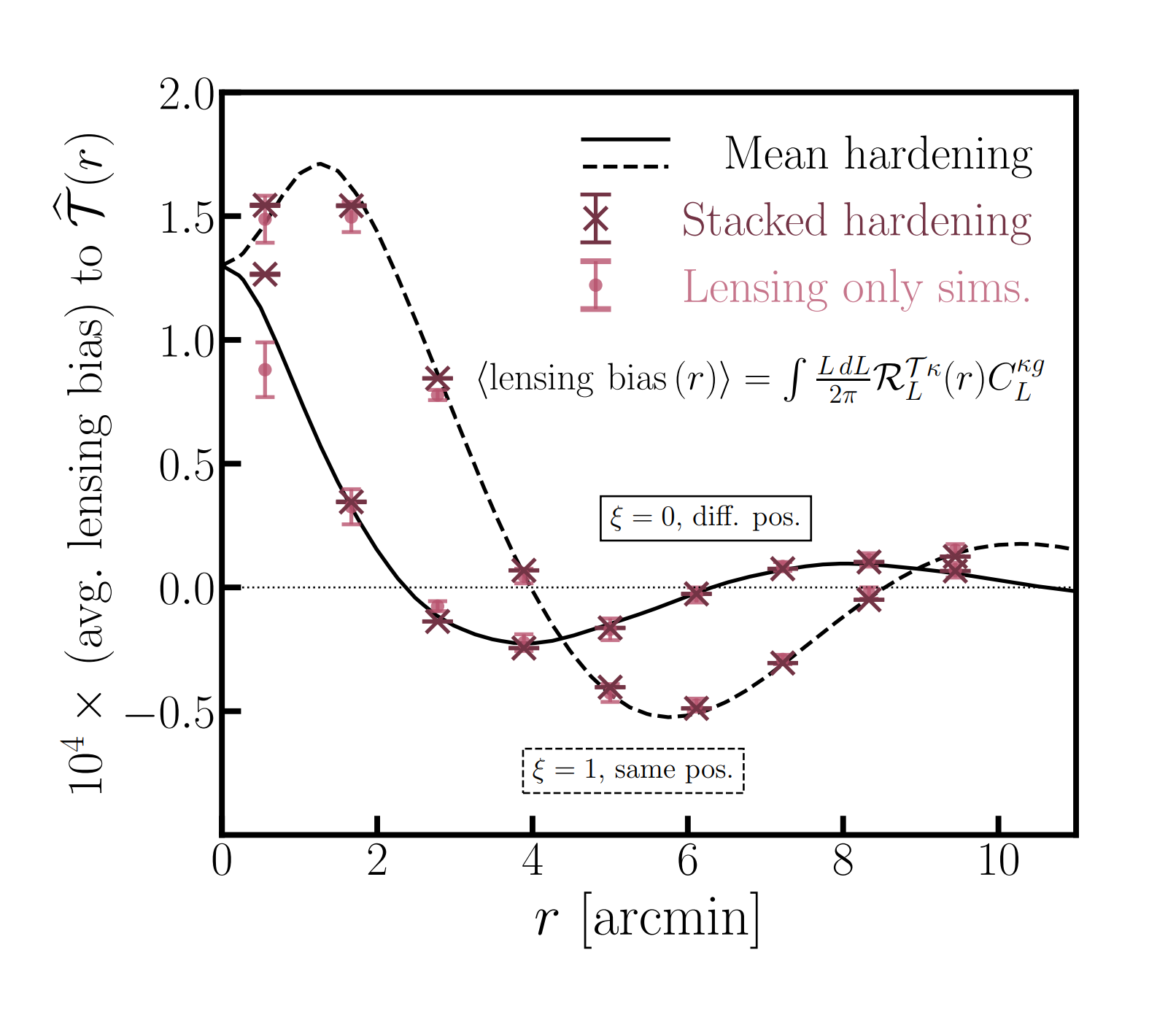
Where's the matter?
The impact of non-gravitational physics on the "small-scale" (a little larger than a galaxy) matter distribution is a key source of systematic uncertainty when extracting cosmological information from high-resolution surveys. These works explore data-driven approaches to better understand the highly-energetic processes responsible for the redistribution of matter within and around galaxies.
Related papers:
Related papers:
- Missing baryons recovered: a measurement of the gas fraction in galaxies and groups with the kinematic Sunyaev-Zel'dovich effect and CMB lensing
- Mapping the gas density with the kinematic Sunyaev-Zel'dovich and patchy screening effects: a self-consistent comparison
- Bias hardened estimators of patchy screening profiles
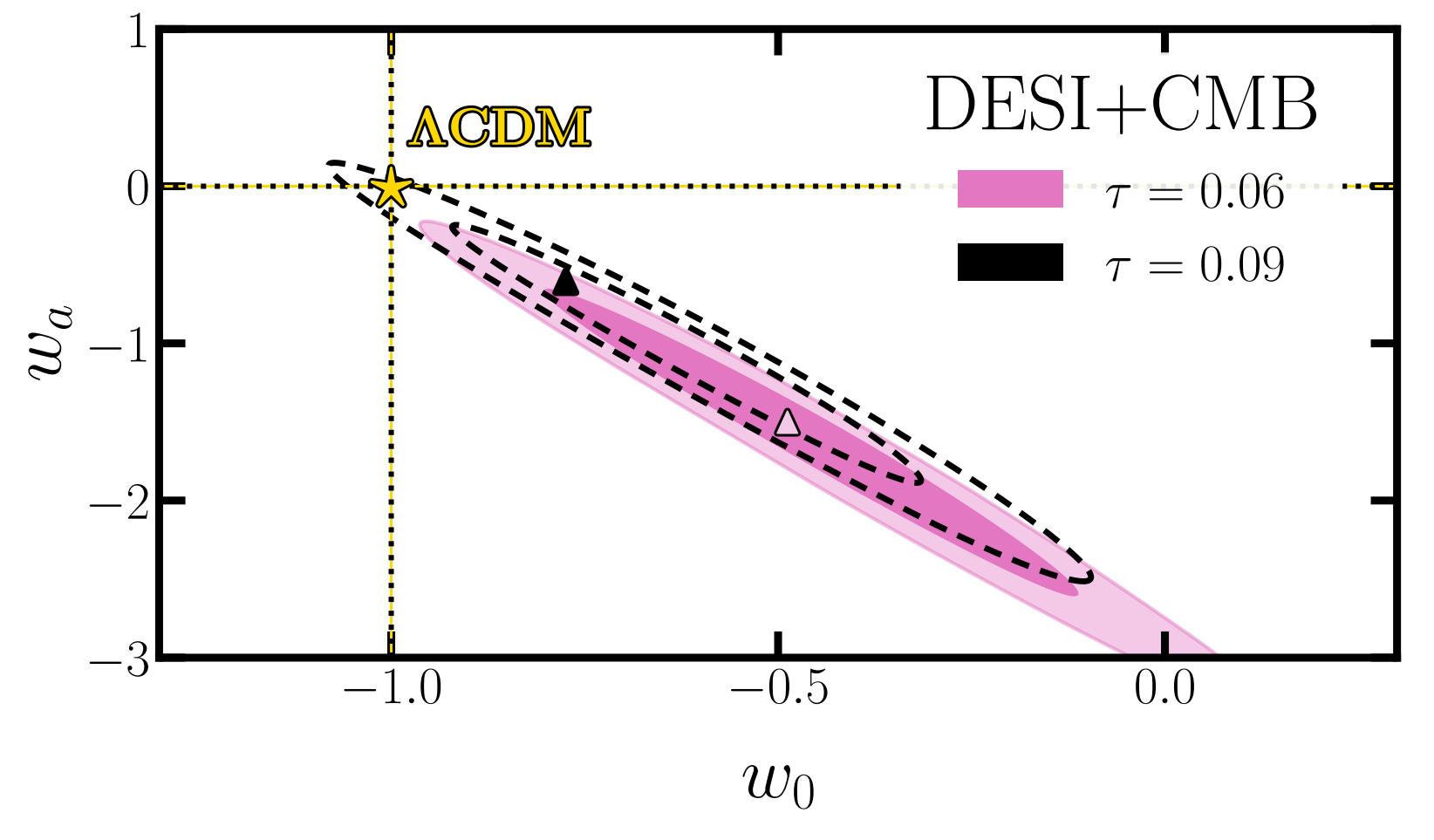
Evolving dark energy or ...?
Recent measurements from DESI show mild (2.2σ) tension with CMB data when analyzed assuming our "standard model of cosmology" (ΛCDM), suggesting a ≃3σ preference for evolving dark energy. The significance of this preference is sensitive to the optical depth to reionization (τ) and can alternatively be phrased as a ≃3-5σ "τ tension."
Related papers:
Related papers:
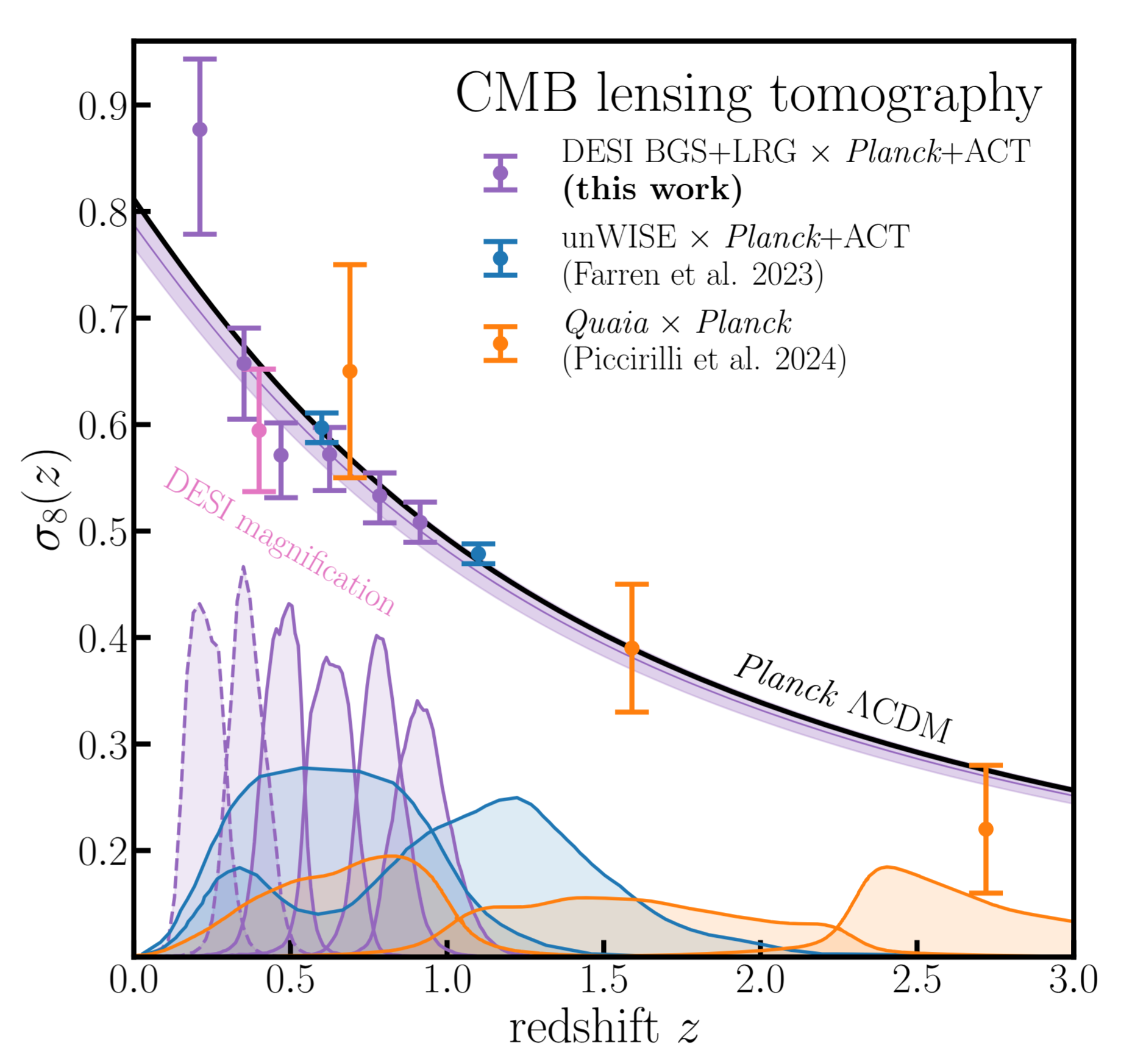
Growth of large-scale structures over the last 7 billion years
We jointly analyze CMB lensing and DESI galaxies to measure the evolution of the universe's large scale matter density, where by "large" we mean roughly 1 million to 300 million light-years. Read more about it from the LBNL news center or from the papers below.
Related papers:
Related papers:
- Cosmology from Planck CMB Lensing and DESI DR1 Quasar Tomography
- Evolution of structure growth during dark energy domination: insights from the cross-correlation of DESI galaxies with CMB lensing and galaxy magnification
- Cosmological constraints from the cross-correlation of DESI Luminous Red Galaxies with CMB lensing from Planck PR4 and ACT DR6
- The Atacama Cosmology Telescope DR6 and DESI: Structure formation over cosmic time with a measurement of the cross-correlation of CMB Lensing and Luminous Red Galaxies
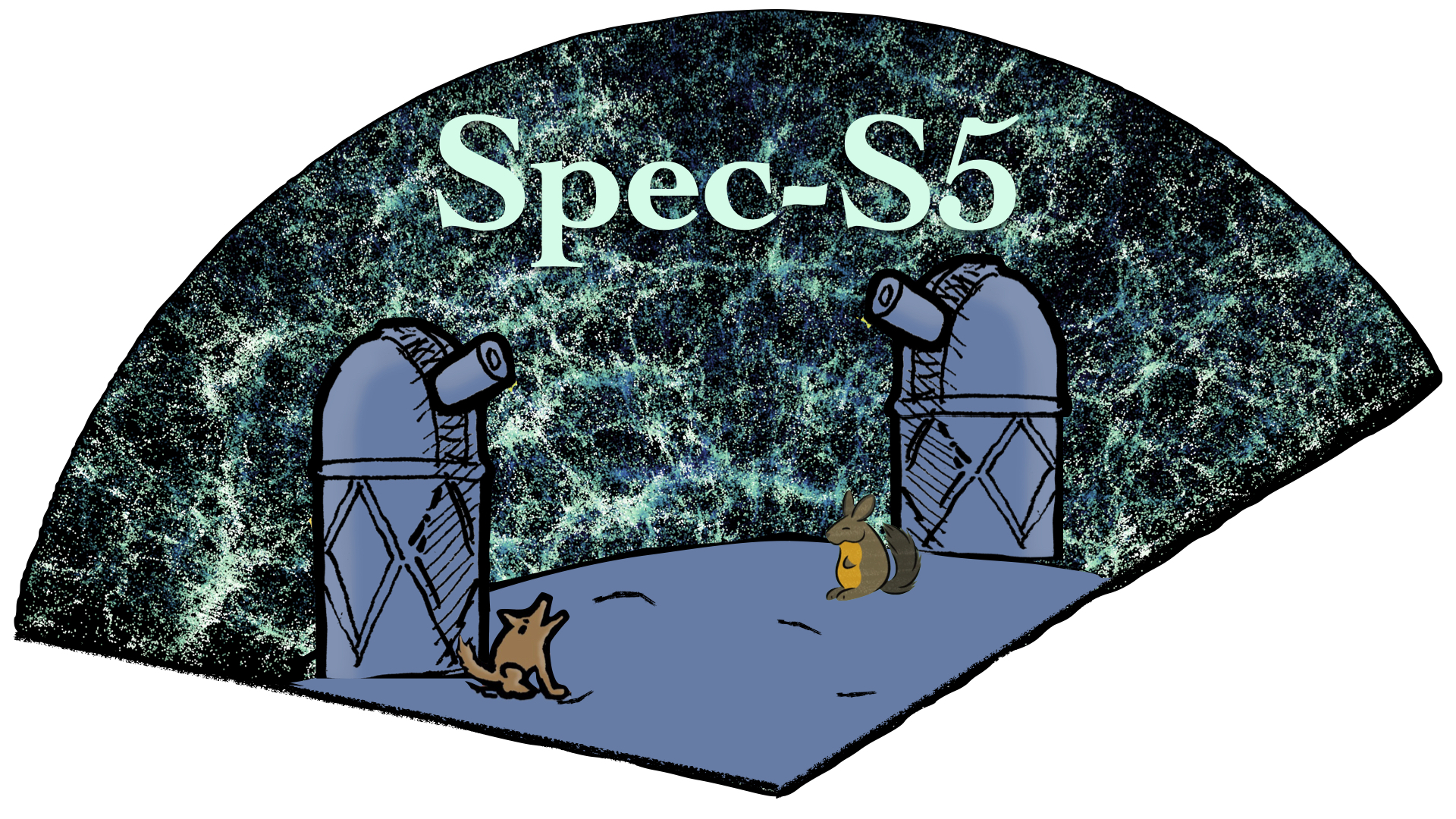
A next-generation spectroscopic galaxy survey
The "Stage-5" spectroscopic experiment is a proposed successor to DESI that would significantly improve our understanding of the early universe through measuring spectra of high-redshift galaxies. I've played a significant role in developing the science case for a Stage-5 survey. Read more about it from the LBNL news center or from the papers below.
Related papers:
Related papers:
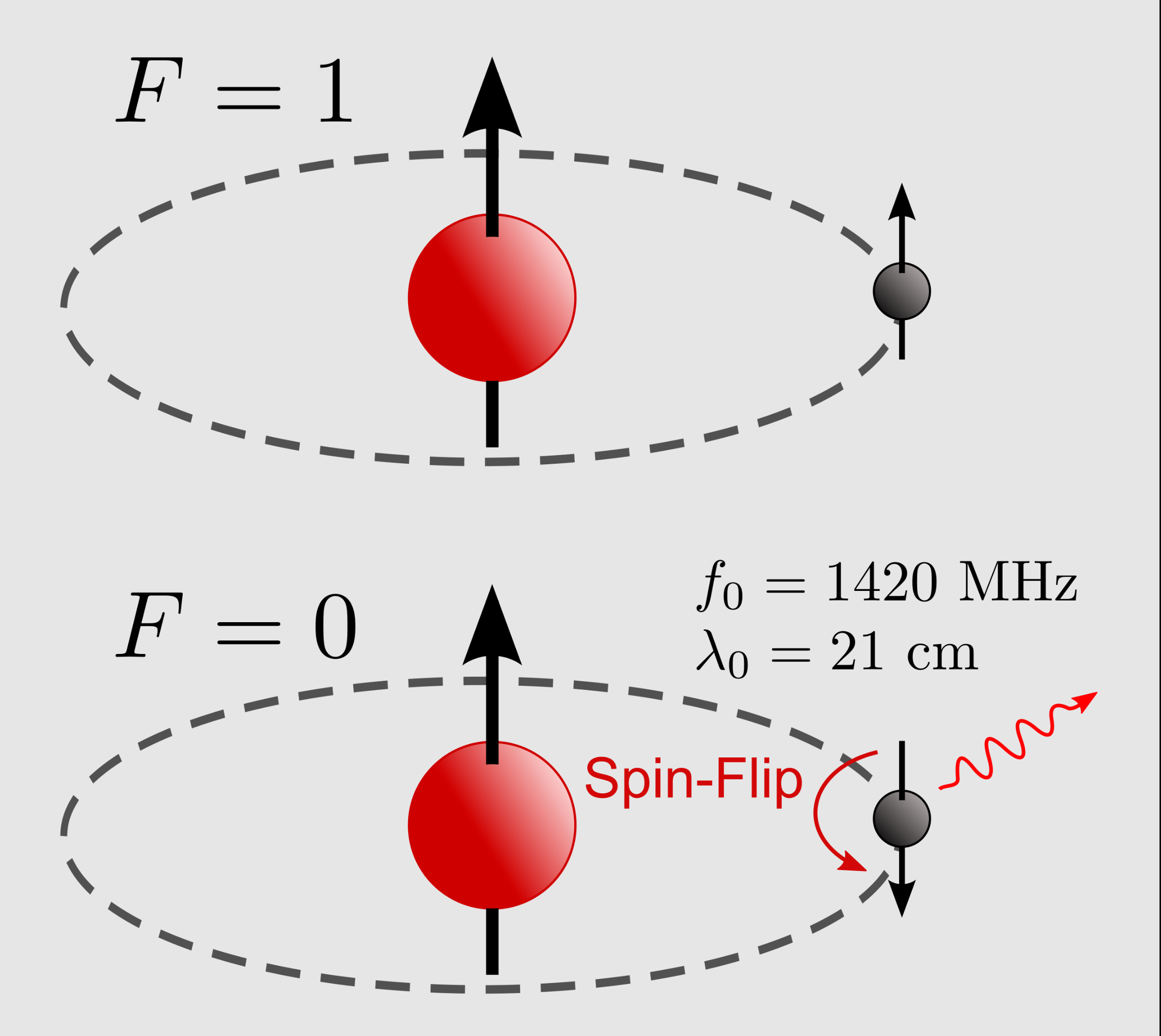
Perturbative 21cm cosmology
Hydrogen's hyperfine transition offers a promising path forward to map out the matter density before and after the birth of the first stars. The papers below present theoretical methods and forecasts for the use of hydrogen as a probe of cosmology and reionization.
Related papers:
Related papers:
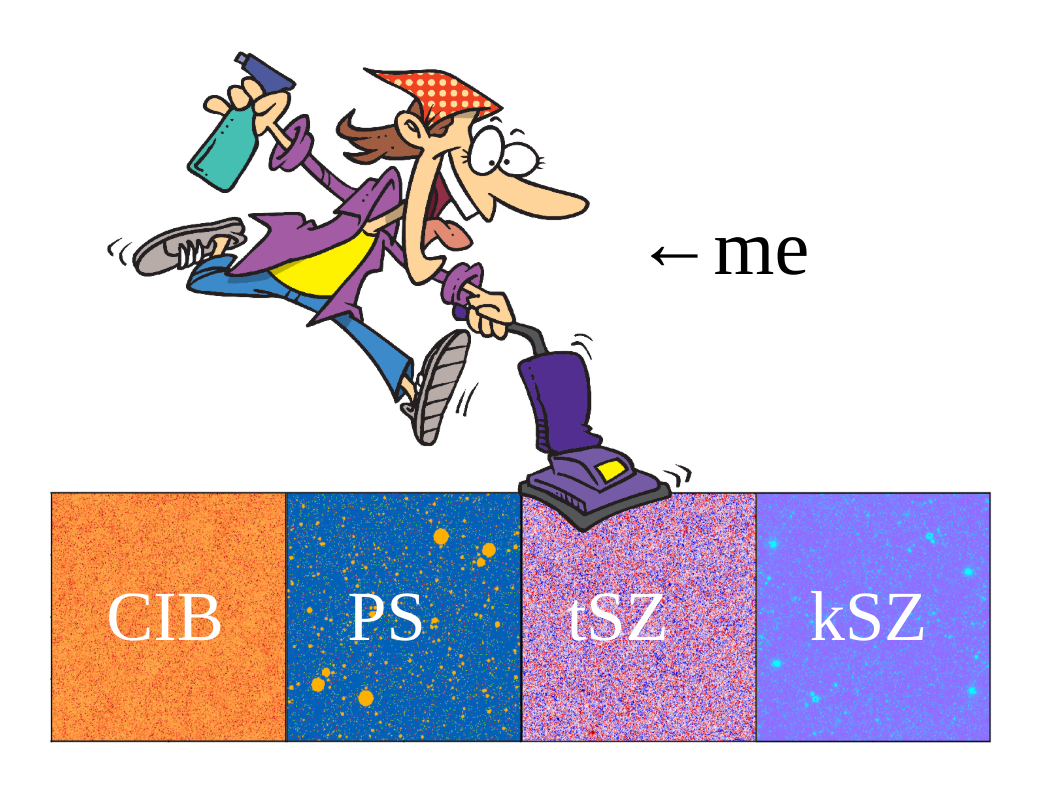
Cleaning up CMB lensing measurements
We improve our ability to remove biases in CMB lensing measurements from extragalactic foregrounds. These methods were adopted in the latest ACT DR6 lensing analysis.
Related papers:
Related papers:
